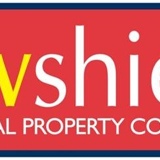Title Page
-
Audit Title
-
Client / Site
-
Client / Site
-
Google Satellite Image
-
GPS Coordinates : Location
-
Site Photos
-
G4S Branch Name
-
Police Station and Case Number
-
Police Investigator name and contact number
1. Customer Site
-
1.1 Name of Customer
-
1.2 Customer Site Address
-
1.3 Service Type
-
1.4 Description of the site.
-
1.5 Description of services.
-
1.6 Current process and routes. (Including escape routes)
2. Loading Area (If not 100%, the Loading Area is not secured)
-
2.1 Perimeter Protection
-
2.2 Access control to the loading area
-
2.3 Windows Protection
-
2.4 Roof Protection
-
2.5 Loading / Unloading
-
2.6 Delivery / Collection Point
-
2.7 CCTV inside loading area
-
2.8 History of incidents
3. Health & Safety : Loading Area
-
3.1 Adequate lighting for CCTV and H&S purposes
-
3.2 Vehicle backstop (prevention of crushing incidents)
-
3.3 No Tripping hazards (boxes, etc. lying around)
-
3.4 No Slipping hazards (oil spills, etc.)
-
3.5 No Falling hazards (loose roof beams, iron sheets, light fittings, etc.)
-
3.6 No Exposed electrical wires
-
3.7 No Fire hazards (fuel, oils, etc)
-
3.8 Fire extinguisher/s available
-
3.9 No Sharp/protruding objects that might pose a danger to crews
-
3.10 No Vehicle fumes - adequate ventilation
4. Cross Pavement Movement
-
4.1 Parking Distance from Entrance (Time & Distance)
-
4.2 Attacker Hiding Places (Between CIT Vehicle & Site Entrance)
-
4.3 Front Door Entrance - Client Volumes (Identification of Potential Attackers)
-
4.4 Guards
-
4.5 Distance from Entrance to Service Point
-
4.6 Number of Pavement Crossings (Movements)
-
4.7 Time on Site
-
4.8 Front Door Entrance - Client Volumes (Identification of Potential Attackers)
5. Health & Safety : Cross Pavement Movement
-
5.1 Adequate lighting for CCTV and H&S purposes
-
5.2 No Tripping hazards (boxes, etc. lying around)
-
5.3 No Falling hazards (loose roof beams, iron sheets, light fittings, etc.)
-
5.4 No Exposed electrical wires
-
5.5 No Sharp/protruding objects that might pose a danger to crews
6. Delivery / Collection Point "Cash Office"
-
6.1 Infrastructure (Walls) "Cash Office"
-
6.2 Infrastructure (Type of Doors)
-
6.3 Infrastructure (Access Control)
-
6.4 Infrastructure (windows if any)
-
6.5 CCTV in Cash Office
-
6.6 Alarm System
-
6.6.1 Alarm monitoring company name, if installed.
-
6.6.2 Description of the alarm system.
7. Health & Safety : Cash Office
-
7.1 Adequate lighting for CCTV and H&S purposes
-
7.2 No Tripping hazards (boxes, etc. lying around)
-
7.3 No Slipping hazards (oil spills, etc.)
-
7.4 No Falling hazards (loose roof beams, iron sheets, light fittings, etc.)
-
7.5 No Exposed electrical wires
-
7.6 No Fire hazards (fuel, oils, etc)
-
7.7 Fire extinguisher/s available
-
7.8 No Sharp/protruding objects that might pose a danger to crews
8. Customer Keys
-
8.1 Who is in control of the customer keys?
-
9. Floor plan with key features (Position of: device, plug, door, steps, counter)
10. Incident Description
-
10.1 Summary of Incident
11. Additional Security Measures
-
11.1 Description of any Additional Security Measures
-
12. Site Risk Rating Standard
- LOW - RISK: Optimal Lighting, Armed Guard, CCTV, Restricted Access, Secure Cash Office/Loading Bay, Panic/Alarm, Safe, Split Key Service, Armed Reaction, Multiple Collections
- MEDIUM RISK: Minimal Lighting, Armed Guard, CCTV, Access, Cash Office/Loading Bay, Alarm, Safe, Split Key Service, Armed Reaction, Single Collection
- HIGH RISK: Poor Lighting, Guard, Alarm, Safe, Customer Control Key, Single Collection
- EXTREME RISK: No Lighting, No Guard, No Alarm, No Safe, No Key, Single Collection
-
12.1 LOW RISK : 85 - 100%
-
12.2 MEDIUM RISK : 70 - 84%
-
12.3 HIGH RISK : 50 - 69%
-
12.4 EXTREME RISK : 0 - 49%
-
13. Any additional info.
-
14. Any additional photos.
-
15. Additional Security Recommendations
-
Survey done by
-
Date Survey finalised
-
Confirmed that Survey content is correct.
-
Date Survey confirmed.
-
Service Accepted
-
Service Not Accepted
-
Service Accepted by
-
16. Comments and Decisions by Operations (Service Accepted)
-
17. Final Recommendations by Risk Department








